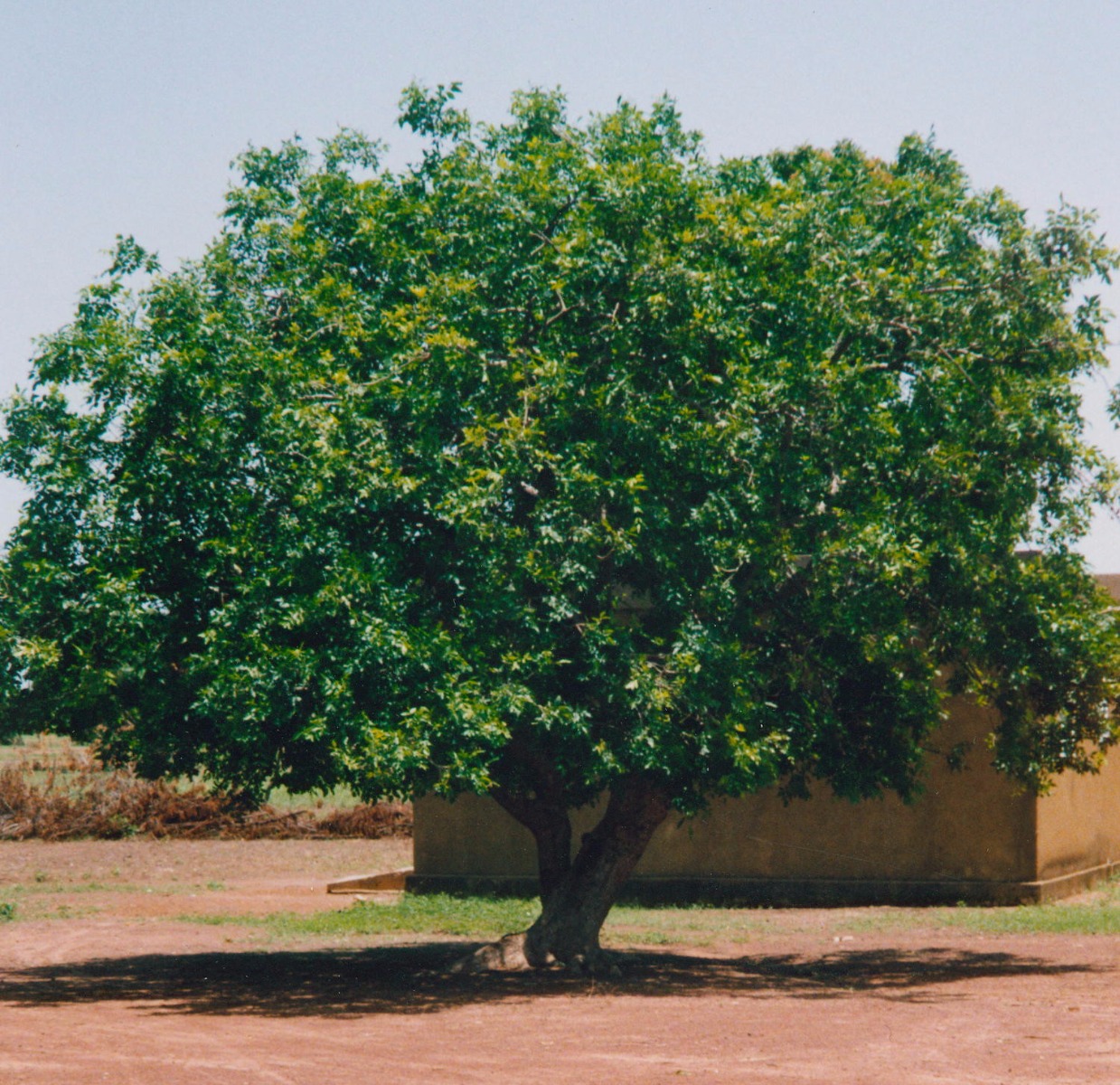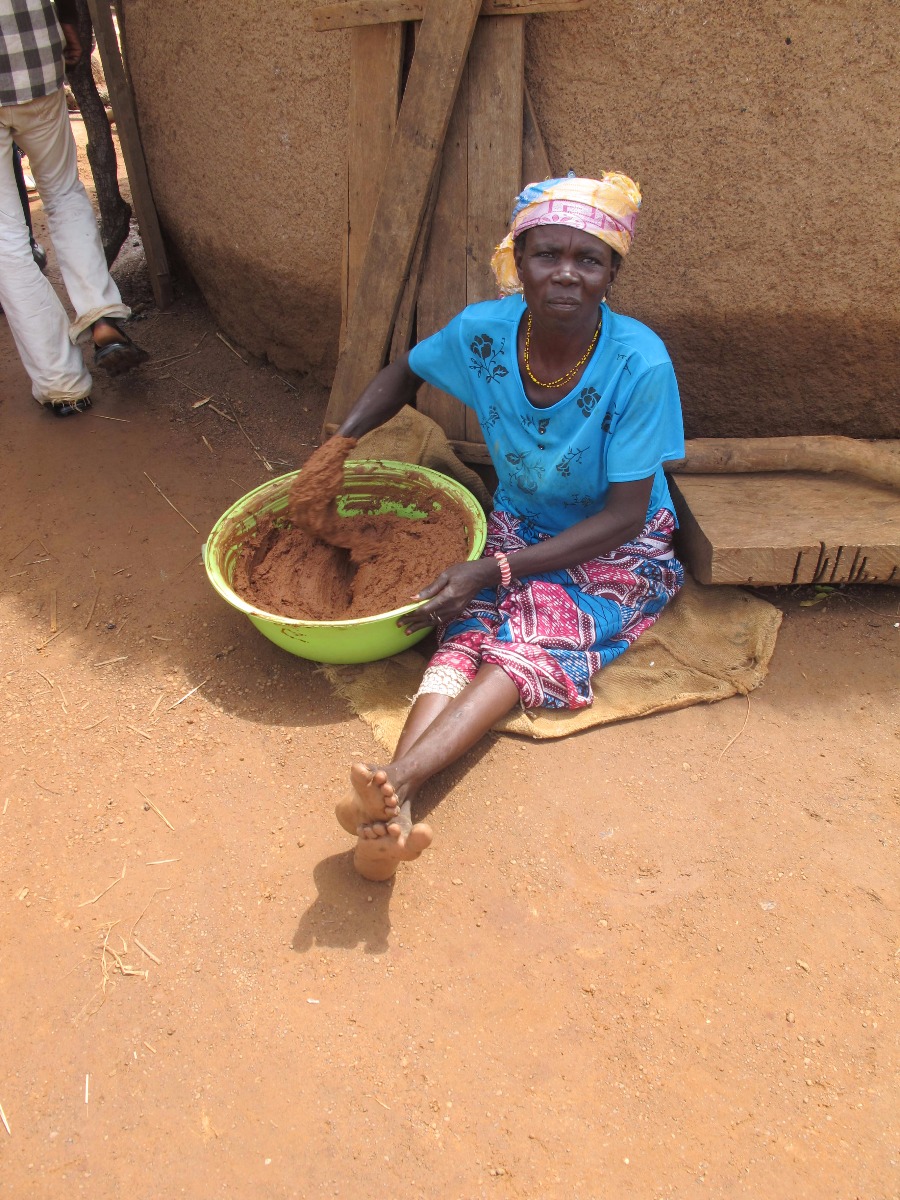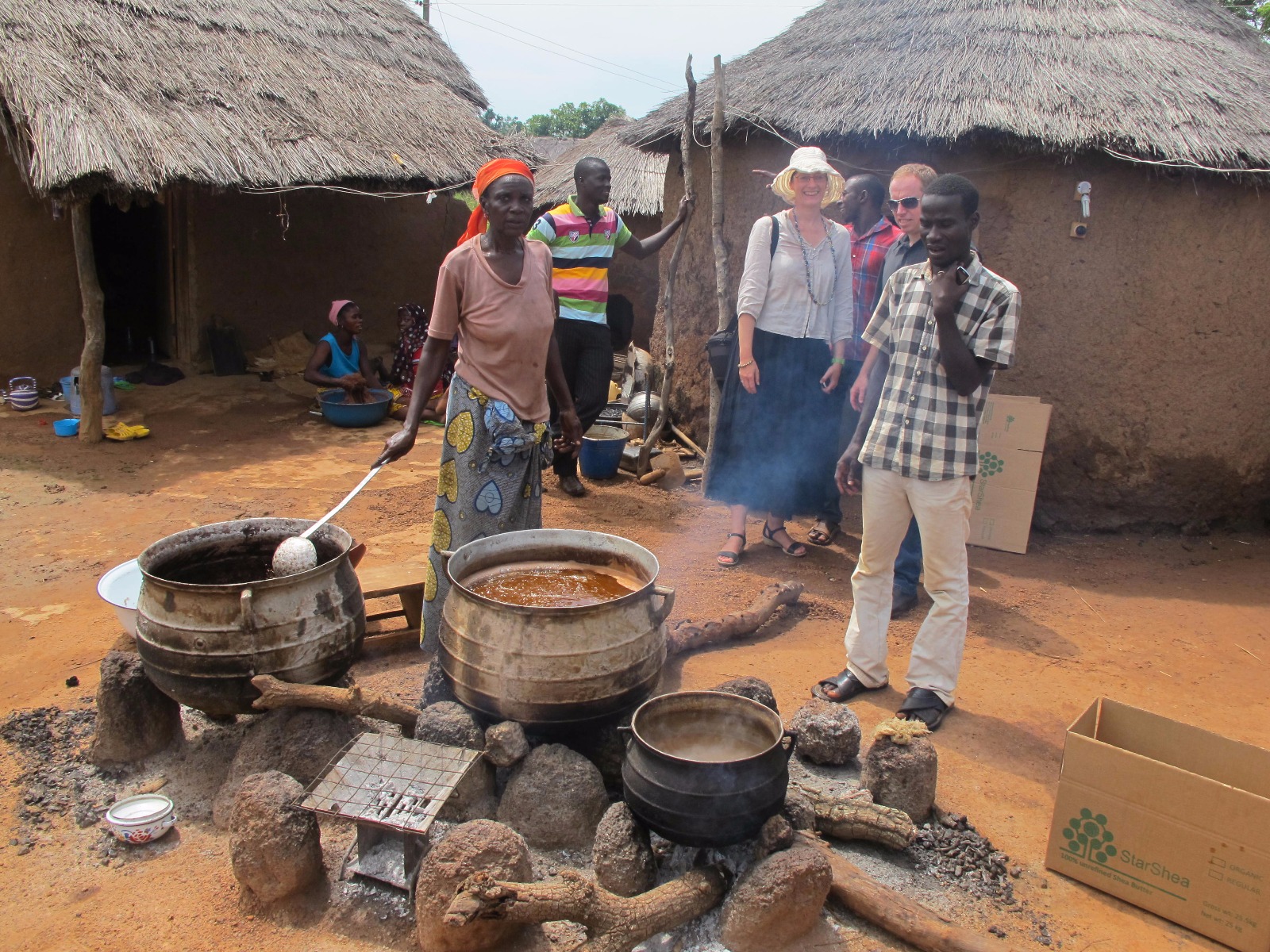Shea Tree / Karité Tree / Buttertree

Almost every woman and girl in North and West Africa knows and uses shea butter. The fruit of the karité tree is one of nature’s special gifts. While the fruit of the 20-meter-high trees can be eaten, up to 50% of the shea fruit’s kernel consists of a very unusual fat: shea butter.
The karité tree is very difficult to grow. New seedlings are mostly just “volunteers,” and it can be as long as 20 years before the first fruits are ready to harvest. The full return only comes when the tree is 30 years old, and lives for centuries .
Because of this extremely long waiting period, there are no karité tree plantations. Only the tradition of always leaving shea trees when clearing land has ensured that they are widespread in West Africa. Felling shea trees is a serious taboo in many countries; in some cases, it’s even illegal.
The shea fruit harvest from May through October is women’s work. The harvest time begins with the Begu festival. The fat of the first nuts is used to prepare a dish of brown beans and shea butter, which the whole village eats together.

The production of shea butter from the fruits is also a job for women. After removing the pulp and cracking the shell, they grind the shea nut (in botanical terms, it’s actually a berry) to a pulp and heat it. Then they add water so that the fine, nutty-smelling shea butter can be separated from the unwanted compounds and skimmed off.
Shea butter has some very special properties that distinguish it from almost all other fats and make it a unique natural ingredient:
-
- Shea butter is firm at room temperature without being cured. If you hold it in your hand, it slowly melts at 37˚C.
- Shea butter will keep for more than three to four years without any preservatives, even in the high temperatures of Central Africa.
- Shea butter is an excellent cooking fat. With the highest smoke point of almost all natural fats (210˚C), it can be used unrefined for cooking and frying.
- Shea butter has a high proportion of polyunsaturated fatty acids. The so-called unsaponifiable components have a proportion of 8-11%, which is not found in other natural botanical substances. This makes shea butter very useful for skin care.
- Shea butter has a high proportion of dietary minerals such as vitamin E and beta-carotene. It also contains a broad spectrum of antioxidants.

The use of shea butter as food is not restricted to the immediate areas where the karité tree grows. In chocolate production, it can replace much more expensive cocoa butter and is also an excellent substitute for the controversial refined palm oil.
In traditional African medicine, shea butter is an integral part of treatments for rheumatism, joint pain, osteoarthritis, and scars.
However, the main use of shea butter is cosmetics. On the next pages, you can read about its great applications for skin and hair.
Our fair trade shea butter is a clean natural product. It has no additives and is NOT refined. The butter has a light beige color, and its natural scent contains notes of chocolate, nuts, and butter. Fair Shea not only fulfills all the biological safety and non-toxicity requirements for cosmetics, but also the much stricter ones for food.
